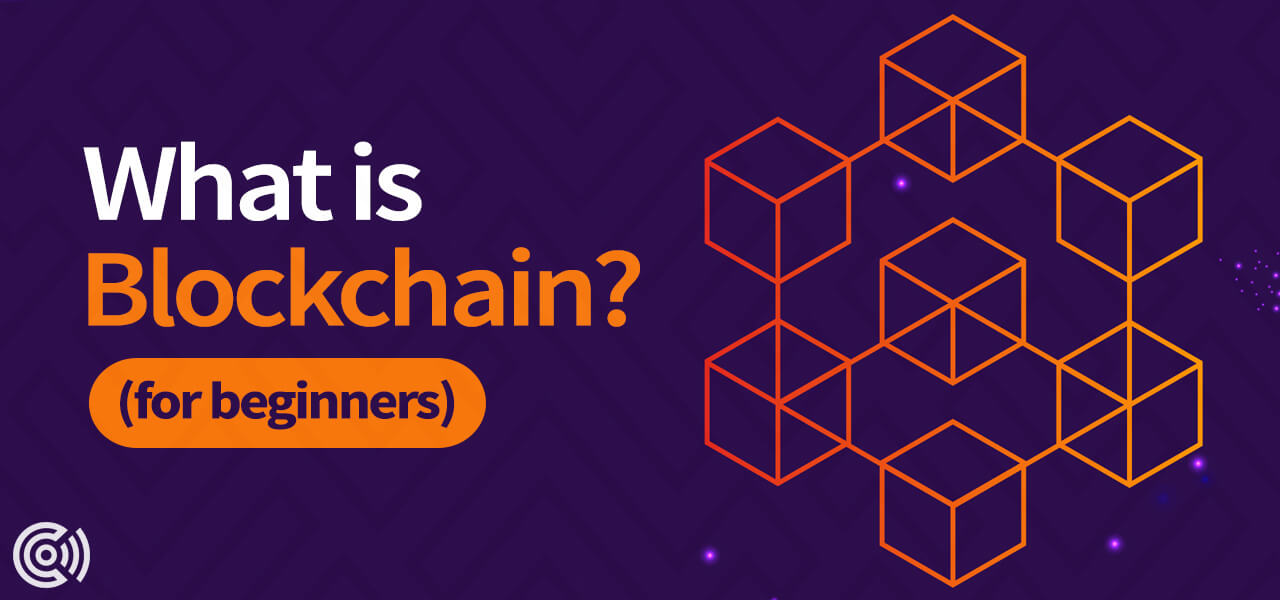What is Blockchain? For beginners

A blockchain is a distributed database known for its crucial role in the development of cryptocurrencies like Bitcoin and Ethereum. Blockchain technologies primarily maintain the security of transactions made using a decentralised cryptocurrency. To gain a deeper understanding we have put together a list of key facts and details of blockchain technology.
Basic Blockchain Facts
- Blockchain technology is not Bitcoin, it is the technology used by Bitcoin.
- It exists only on the internet as Bitcoin does.
- A blockchain network is simply a chain of digital blocks.
- A block contains information about a transaction such as: a) who sent it; b) who received it; c) how much; d) date time.
- Distributed ledger technology is a system used for securely recording transactions made within a blockchain.
- Blockchain is similar to a database, but it is not stored in one location, it’s stored in multiple locations.
- All of the Blockchain data is available to the public. Anybody can read the data but there are no names on it, it’s just human unreadable numbers and letters:
- e.g. 0xf94a1c0dd47c75415ffd88450a83321dc000ee6b.
- You can view the blocks on a website called blockchain explorer.
- Blockchains can be centralised (owned by someone) or decentralised (owned by nobody).
- Bitcoin uses a decentralised blockchain.
- Private blockchain networks are peer-to-peer networks run by one governing body.
- Public blockchain networks are connected to the internet and used to validate transactions and execute smart contracts.
How does the Blockchain work?
- Someone requests a transaction using digital currency (e.g. they want to buy Bitcoin).
- The information about the transaction is put into a block (e.g. sender, recipient, amount, price, etc).
- The block is given an ID – a long string of numbers and letters known as a “cryptographic hash”, or “hash” for short.
- Each new block contains the hash (ID) of the previous block, forming a chain.
- Once a block has been added to the blockchain, it is permanent and serves as a point of truth.
- Anyone can publicly read the blockchain information to validate a transaction.
- In some blockchains, extra information can be stored such as a list of conditions of transactions.
Why do we need to use Blockchain?
- Decentralisation – a decentralised blockchain is truly independent and not owned by anybody. This helps prevent the Bitcoin blockchain from being shut down by the government.
- Transparency – a public blockchain database can show information about transactions that are publicly available to everyone. This prevents fraud because everything is transparent.
- Immutability – blocks on a blockchain are permanent. This prevents people from changing information about transactions after they have happened.
- Solves Hard Problems – blockchain solves the once seen as unsolvable Byzantine Generals Problem and the Double spending problem.
What does Blockchain offer Australia?
- Lowers cost of business
- Global trust
- Global exchange
Double Spending Explained
Double spending is when two or more people spend the same amount at the same time so there is no way of knowing which one is the first transaction. A decentralised network such as Bitcoin requires a number of verification confirmations of transactions before they are placed on the blockchain. While this process is happening, a double spend attack could occur.
In the cryptocurrency network only, miners will be allowed to confirm transactions; they do this by solving a cryptographic puzzle. They will spread them across the network when they take the transactions and validate them. After that, all the nodes within the network will be added to its database. When the transaction is successfully confirmed, the miner will receive a reward and transaction. Additionally, once the transaction is confirmed, it will become irreversible and unforgeable.
Principally, every cryptocurrency network is constructed on the absolute consensus of all the participants in regard to the validity of balances and transactions. Although, within the network, if they disagree on a single balance the whole system would basically break. Nevertheless, there are rules programmed within the network to prevent this from occurring.



